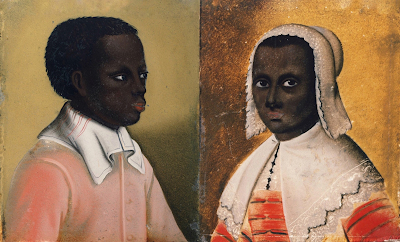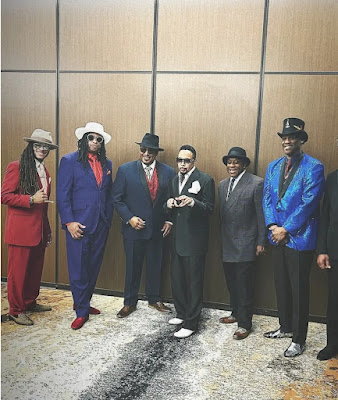March 24, 2023 Anthony & Mary Johnson
He later became a tobacco farmer in Maryland. He attained great wealth after completing his term as an indentured servant, and has been referred to as "'the black patriarch' of the first community of Negro property owners in America".
In the early 1620s, Portuguese slave traders captured the man who would later be known as Anthony Johnson in Portuguese Angola, named him António, and sold him into the Atlantic slave trade. António was bought by a colonist in Virginia. As an indentured servant, António worked for a merchant at the Virginia Company. He was also received into the Roman Catholic Church.
He sailed to Virginia in 1621 aboard the James. The Virginia Muster (census) of 1624 lists his name as "Antonio not given," recorded as "a Negro" in the "notes" column. Historians have some dispute as to whether this was the same António later known as Anthony Johnson, as the census lists several men named "Antonio". This one is considered the most likely.
Johnson was sold as an indentured servant to a white planter named Bennet to work on his Virginia tobacco farm. (Slave laws were not passed until 1661 in Virginia; prior to that date, Africans were not officially considered to be slaves).
Such workers typically worked under a limited indenture contract for four to seven years to pay off their passage, room, board, lodging, and freedom dues. In the early colonial years, most Africans in the Thirteen Colonies were held under such contracts of limited indentured servitude. With the exception of those indentured for life, they were released after a contracted period. Those who managed to survive their period of indenture would receive land and equipment after their contracts expired or were bought out. Most white laborers in this period also came to the colony as indentured servants.
António almost died in the Indian massacre of 1622, when Bennet's plantation was attacked. The Powhatan, who were the indigenous people dominant at that time in the Tidewater region of Virginia, were attempting to evict the colonists. They raided the settlement where Johnson worked on Good Friday and killed 52 of the 57 men present.
In 1623, a black woman named Mary arrived aboard the ship Margaret. She was brought to work on the same plantation as António, where she was the only woman present. António and Mary married and lived together for more than forty years.
Sometime after 1635, António and Mary concluded the terms of their indentured servitude. António changed his name to Anthony Johnson.[8] He first entered the legal record as an unindentured man when he purchased a calf in 1647.
Johnson was granted a large plot of farmland by the colonial government after he paid off his indentured contract by his labor. On July 24, 1651, he acquired 250 acres (100 ha) of land under the headright system by buying the contracts of five indentured servants, one of whom was his son, Richard Johnson. The headright system worked in such a way that if a man were to bring indentured servants over to the colonies (in this particular case, Johnson brought the five servants), he was owed 50 acres a "head", or servant. The land was located on the Great Naswattock Creek, which flowed into the Pungoteague River in Northampton County, Virginia.
With his own indentured servants, Johnson ran his own tobacco farm. In fact, one of those servants, John Casor, would later become one of the first African men to be declared indentured for life.
In 1652, "an unfortunate fire" caused "great losses" for the family, and Johnson applied to the courts for tax relief. The court reduced the family's taxes and on February 28, 1652, exempted his wife Mary and their two daughters from paying taxes at all "during their natural lives." At that time, taxes were levied on people, not property. Under the 1645 Virginia taxation act, "all negro men and women and all other men from the age of 16 to 60 shall be judged tithable." It is unclear from the records why the Johnson women were exempted, but the change gave them the same social standing as white women, who were not taxed. During the case, the justices noted that Anthony and Mary "have lived Inhabitants in Virginia (above thirty years)" and had been respected for their "hard labor and known service".
By the 1650s, Anthony and Mary Johnson were farming 250 acres in Northampton County while their two sons owned a total of 550 acres.
In 1657, Johnson's neighbor, Edmund Scarborough, allegedly forged a letter in which Johnson acknowledged a debt, whether this debt was real or not is unknown. Johnson did not contest the case. Johnson was illiterate and could not have written the letter; nevertheless, the court awarded Scarborough 100 acres (40 ha) of Johnson's land to pay off his alleged "debt".
In this early period, free blacks enjoyed "relative equality" with the white community. About 20% of free black Virginians owned their own homes. In 1662 the Virginia Colony passed a law that children in the colony were born with the social status of their mother, according to the Roman principle of partus sequitur ventrem. This meant that the children of slave women were born into slavery, even if their fathers were free, European, Christian, and white. This was a reversal of English common law, which held that the children of English subjects took the status of their father. The Virginian colonial government expressed the opinion that since Africans were not Christians, common law could not and did not apply to them.
Anthony Johnson moved his family to Somerset County, Maryland, where he negotiated a lease on a 300-acre (120 ha) plot of land for ninety-nine years. He developed the property as a tobacco farm, which he named Tories Vineyards.[29] Mary survived, and in 1672 she bequeathed a cow to each of her grandsons.
Research indicates that when Johnson died in 1670, his plantation was given to a white colonist, not to Johnson's children. A judge had ruled that he was "not a citizen of the colony" because he was black. In 1677, Anthony and Mary's grandson, John Jr., purchased a 44-acre (18-hectare) farm which he named Angola. John Jr. died without leaving an heir, however. By 1730, the Johnson family had vanished from historical significance. Genealogical research suggests that some of Anthony's other descendants moved to Delaware and then to North Carolina.




Comments
Post a Comment